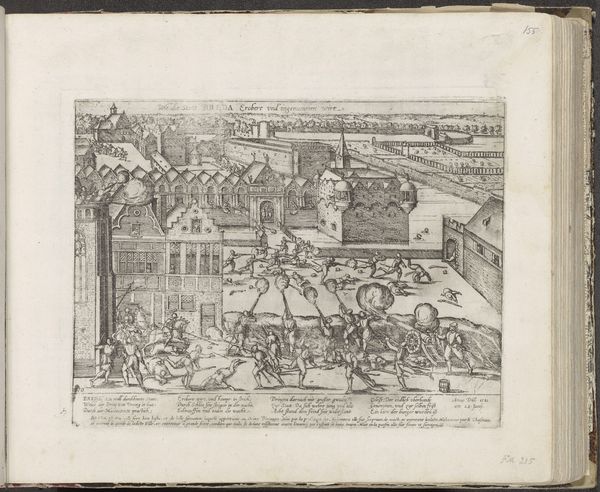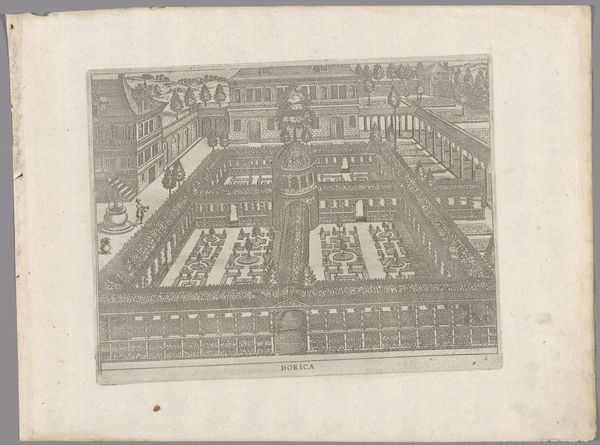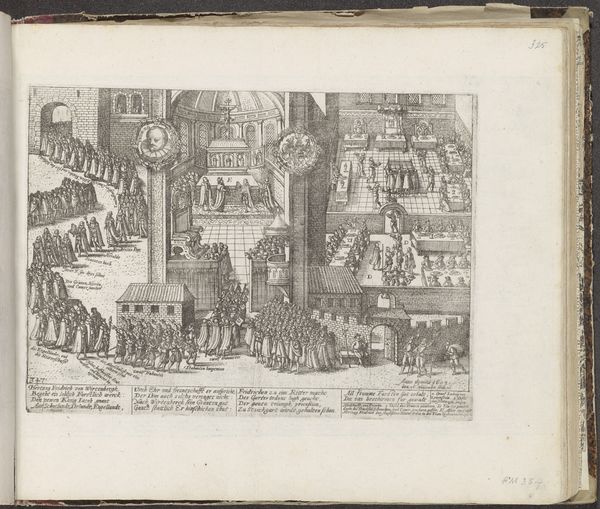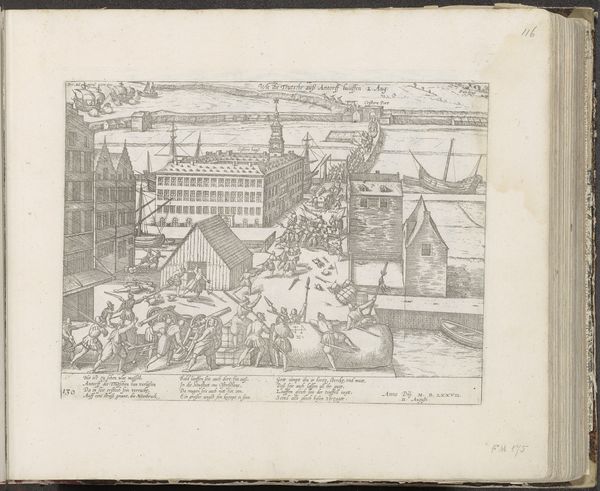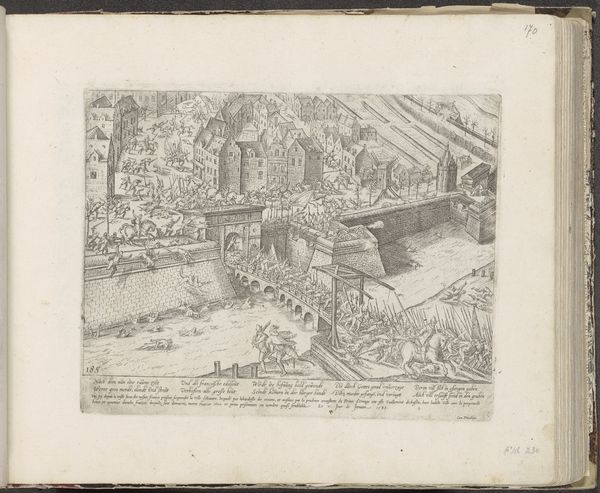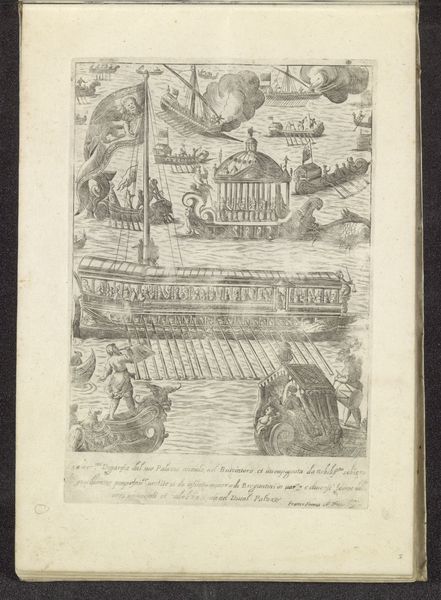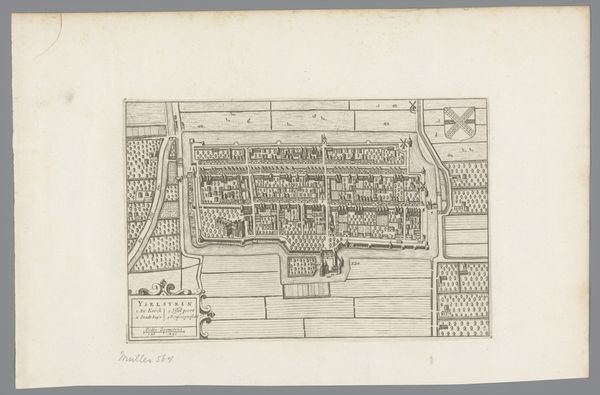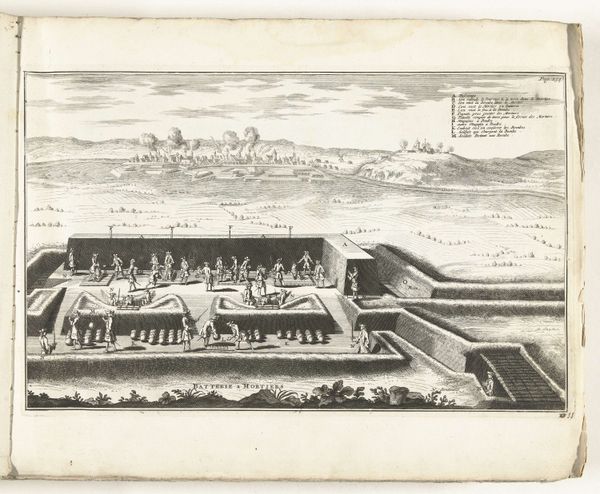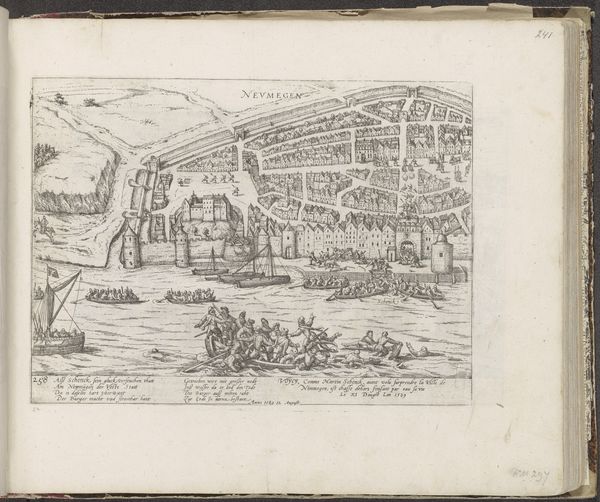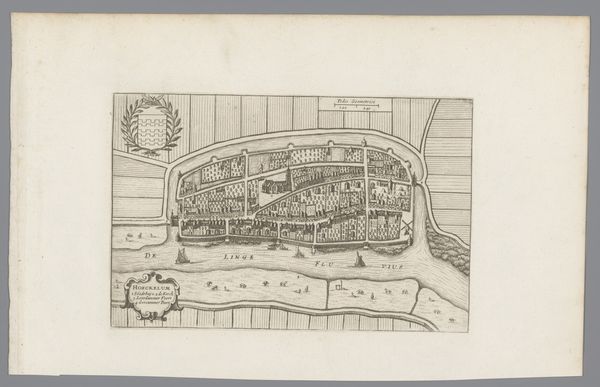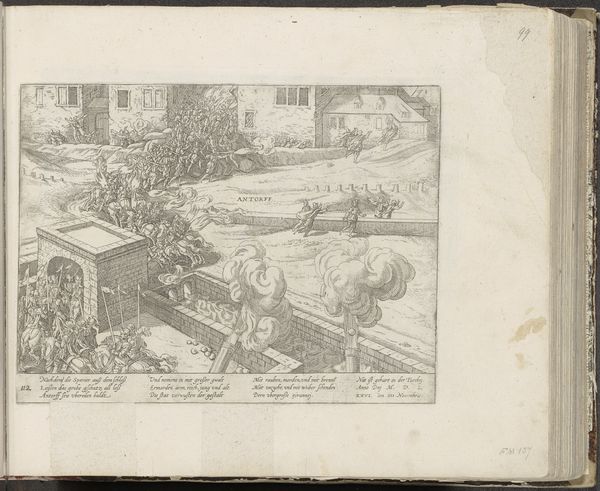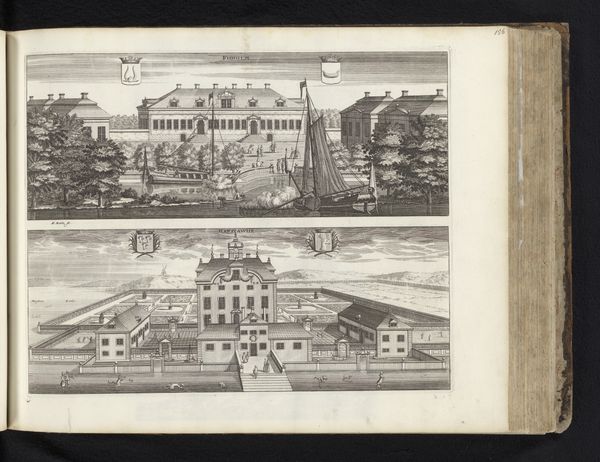
drawing, engraving
#
drawing
#
baroque
#
landscape
#
cityscape
#
engraving
Dimensions: height 205 mm, width 344 mm
Copyright: Rijks Museum: Open Domain
Curator: Here we have Adam Perelle’s "View of the Östermalma Estate," created between 1670 and 1674. The medium is engraving. Editor: My first impression is of order—strict, geometric order. Every tree, every building, is meticulously placed and rendered in detailed linearity. It projects a sense of controlled, cultivated beauty, typical of the Baroque. Curator: Indeed. The symmetry, the calculated arrangement of space—it all speaks to a very particular understanding of landscape as a symbol of power and control. Note how the central building, presumably the main house of the estate, commands the view. The architectural structure reinforces the visual language of dominance, wouldn't you say? Editor: Absolutely. Beyond just a display of wealth, it feels deeply rooted in social symbolism. Water—here, it forms a formal pool—represents purification and potential. Gardens were a Paradise Regained, controlled nature mirroring a refined society. The figures depicted leisurely enjoying the manicured landscape also carry their own significance; they are performative, exhibiting aristocratic leisure and the fruits of ownership. The iconography speaks of a golden age curated through control and vision. Curator: Consider the composition. The perspective directs your eye deep into the estate, past the precisely laid-out gardens and geometric parterres. Perelle's expert deployment of hatching and cross-hatching builds spatial depth and modulates value, subtly differentiating textures. There's a calculated flatness too. Space here isn't necessarily mimetic but deliberately constructed to convey not merely location, but idealized representation. Editor: Yes. What appears at first glance as a literal rendering transforms, upon further inspection, into a projection of ideological vision, of aristocratic dominion legitimized through nature itself. Perelle delivers far more than meets the eye, doesn't he? Curator: Precisely. It is about line, form, and organization; it’s about how these elements construct a meaning. Editor: And those symbols reveal, through layered context, not only intention, but what that intention aimed to embed in collective consciousness: a message of immutable social hierarchies made manifest in spatial arrangements and visual tropes.
Comments
No comments
Be the first to comment and join the conversation on the ultimate creative platform.
